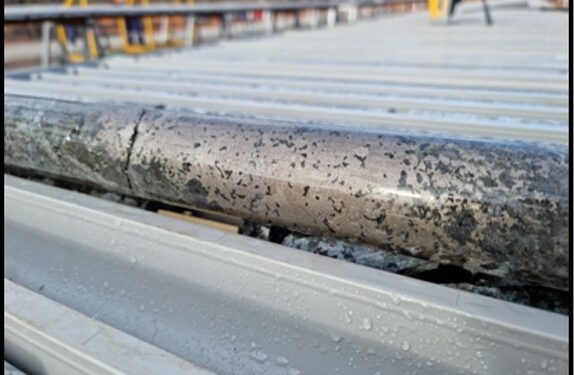Intersects Nickel-Copper Sulphide Associated With Large EM Plate
Legend Mining Limited (ASX:LEG) has obtained promising initial results from diamond drilling at the Octagonal and Magnus prospects within the Rockford Project, Fraser Range, Western Australia.
Regional exploration comprising diamond and aircore drilling commenced in August 2021 at the Rockford Project over tenements E28/1716 and E28/1717
These tenements contain the advanced Octagonal and Magnus prospects, which are both characterised by “eye” shaped aeromagnetic features and the presence of highly favourable mafic/ultramafic intrusive host rocks.
Both prospects lie within the same NE-SW trending structural corridor which hosts the Silver Knight and Nova-Bollinger Ni-Cu deposits some 110km and 150km to the southwest respectively
“The diamond hole at Octagonal essentially confirms that Octagonal is another large fertile intrusion, as is Mawson,” Managing Director, Mark Wilson, said.
“Legend is in the enviable position of now having two locations to focus its exploration efforts to find the next nickel copper mine in the Fraser Range.
“Magnus is very much a work in progress, with the first ever deep hole into the intrusion confirming the right host rocks for the nickel-copper mineralisation we are looking for.”
Octagonal was originally targeted by the Creasy Group due to its distinctive “eye” aeromagnetic character, with initial soil sampling and aircore drilling returning anomalous Ni-Cu values.
Aircore drilling over the aeromagnetic feature defined the Octagonal Intrusive Complex comprising highly favourable Ni-Cu host rocks including olivine gabbronorite, troctolite, peridotite, gabbronorite and norite.
RC/diamond drilling was then undertaken, mainly on the south-eastern and southern margins of the intrusive complex targeting EM conductors and IP features.
Significantly, the RC and diamond drilling intersected multiple intervals of massive, semi-massive, net textured, stringer and disseminated pyrrhotite-pentlandite-chalcopyrite sulphides associated with the mafic/ultramafic intrusives.
The mineralisation identified to date is discontinuous and subeconomic, however it demonstrates all the characteristics of a fertile magmatic Ni-Cu sulphide system.
Diamond Drillhole OCDD001 Legend’s first drillhole into the Octagonal Intrusion, OCDD001, was drilled targeting FLTEM and DHTEM plates
The FLTEM and DHTEM conductors targeted with OCDD001 are clearly associated with Ni-Cu sulphide mineralisation.
DHTEM completed on OCDD001 confirms a series of complex conductors over a 40m wide zone, with modelling indicating potential for extension beyond the conductor plates currently modelled.
The DHTEM data fits the current geological understanding from the limited drilling completed at Octagonal, that the eastern contact of the Octagonal intrusion hosts a significant strike length of Ni-Cu sulphide mineralised intercepts. This drillhole is confirmation that Octagonal is a large, fertile, orthomagmatic Ni-Cu intrusive system, akin to the known deposits of Nova-Bollinger and Silver Knight in the Albany-Fraser Belt. Further work programmes will interrogate the DHTEM from OCDD001 and target mineralisation across the Octagonal intrusion and at depth, with the aim to define an economic Ni-Cu sulphide accumulation.
Magnus Prospect – E28/1716
Magnus was originally targeted by the Creasy Group due to its distinctive “eye” aeromagnetic character.
Subsequent aircore drilling over the aeromagnetic feature identified the Magnus Intrusive Complex comprising troctolite and fractionated norite suite surrounded by highly magnetic metasediment/granulite country rocks.
Diamond Drillhole MGDD001 Diamond drillhole MGDD001 is the first ever diamond drillhole into the Magnus intrusion. It was designed to target a gravity feature and test below anomalous aircore geochemistry into what was believed to be a large mafic-ultramafic intrusion.
The drillhole intersected highly prospective mafic and ultramafic assemblages from 173.65m downhole to 597.3m end of hole.
The fractionated assemblages encountered, especially significant thicknesses of troctolite, suggest the drillholes intersected the upper zone of a large intrusive body.
For further information please visit: https://legendmining.com.au/












